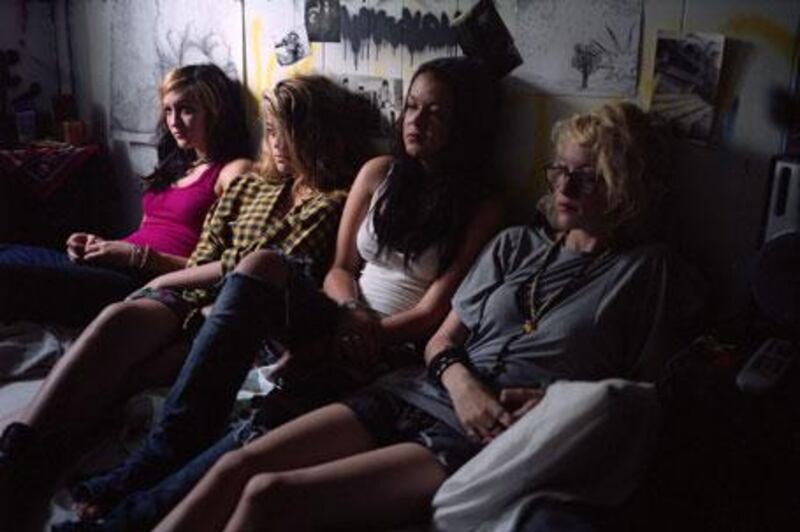For years Argentine film, like a struggling schoolchild, seemed to miss out on the top prize. Features poured out of Mexico and Brazil, where they were eagerly swallowed by European and American festival programmers who showered them with awards. Yet Argentina seemed destined to produce only a few art-house films a year, never penetrating the all-important international markets with the same success as some of its Latin American counterparts.
But the sands have rapidly shifted. Argentina is basking in Oscar success after El Secreto de sus Ojos, directed by Juan José Campanella, picked up the award for Best Foreign Language Film. (A cleverly intertwined murder investigation and love story, the plot flits between the present day and the 1970s military dictatorship.) It was the first time an Argentine film had won at the Oscars since Luis Puenzo's La Historia Oficial 25 years earlier.
Campanella's success is perhaps an exception to the rule. It's not every day that non-English films get to piggyback the colossal publicity machine that is the Academy Awards. Nonetheless, away from the glitz and the glamour of Hollywood, Argentine cinema is enjoying an extraordinary period of growth. Thanks to a new generation of talented directors that have emerged in the past decade, such as Lucrecia Martel, Lisandro Alonso and Pablo Trapero, the country produces some 80 films a year. And the annual independent film festival, the Buenos Aires Festival International de Cine Indpendiente (BAFICI), is showing that successful international film festivals and thought-provoking, art-house cinema are by no means mutually exclusive.
This year's festival - the 12th edition - is running at nine locations around the capital. Numbers have swelled to around a quarter of a million visitors, and there were 1,069 screenings in 2009. It might not be the most famous film festival in Latin America, but the programmer Fernando Chiappussi believes it's one of the most significant. "Generally, Latin American colleagues refer to us as the most important festival in the region, at least in terms of independent cinema," he says. "There are other bigger or more glamorous festivals, like Mar del Plata, Rio de Janeiro or Guadalajara, but BAFICI is very well established and is a dearly loved festival that gets a lot of attention."
The film jury is made up of directors and actors from Europe and the US, including Angela Bassett-Vance of Malcolm X and Boyz in the Hood fame, and the principal awards categories are for Best International Film and Best Argentine Work, the latter for both feature and short. On top of these principal categories, there are innovation awards for future cinema and human rights, as well as all the usual Special Jury, Best Director and Best Actor garlands. It's a hugely varied line-up, with the international competition alone featuring 19 films from countries including the US, Spain, Mexico, Singapore, Italy and Romania.
Festival rules dictate that films that have already received extensive national and international attention aren't a priority. Indeed, many of the features selected from overseas are Latin American premieres. What's intriguing about BAFICI is the way it sticks to its "independent" roots, giving Argentine audiences the chance to watch foreign films that are a world away from the big-budget ones that normally fill cinemas. Of the three US films in the international competition this year, Putty Hill, directed by Matt Porterfield, tells the story of people struggling to come to terms with a friend's death from a heroin overdose. Another, Go Get Some Rosemary (Daddy Longlegs), directed by Ben and Joshua Safdie, looks at a divorced father's relationship with his two sons.
The programmers' task of selecting films isn't always easy. Argentina's industry may be growing but it's still reliant on financial support from international film funds, which can sometimes call into question how "independent" the films being shown really are. "The most obvious criteria," Chiappussi says, "is independence in terms of production. But as Argentina doesn't have a really consolidated industry, almost all cinema is dependent on state subsidies and the support of overseas co-production funds. There are some films that are looking to move away from this system in which one often has to 'present' a project before making the film."
Other imperatives, he adds, are that the films BAFICI showcases need to be art house as opposed to entertainment, and that the festival keeps pushing the envelope with works that mainstream channels might find too much of a risk to show. For all the cutting-edge programming, Argentine films at the 2010 festival continue to address the years of military dictatorship, still a raw wound for many who lived through the worst period in the 1970s. The film that opened the festival on April 8, Secuestro y Muerte (Abduction and Death), directed by Rafael Filippelli, is a dramatisation of real events surrounding the capture and murder of the former junta leader General Aramburu. The closing film, meanwhile, Los Condenados (The Condemned), directed by the Spaniard Isaki Lacuesta, is set in present-day Argentina and centres around a group of former militants helping a forensic team find the body of an ex-partner. Other films, such as El Predio (The Building), showing in the Cine del Futuro category, is an avant-garde documentary about ESMA, a navy school in Buenos Aires used as one of the main torture centres during the dictatorship.
So why does Argentine cinema continue to tackle these issues from the past? "It's an idea that's still attractive due to its dramatic possibilities," Chiappussi says. "And at the same time, it's perceived as a burden because in the 1980s many films were made documenting the repression. Even now, Argentine cinema tends to be associated with this theme from abroad." While the success of La Historia Oficial set a precedent for this type of cinema, directors are finding new ways to tackle these sensitive topics with films like La Mujer Sin Cabeza (The Headless Women) from Lucrecia Martel, which looks at ideas related to the dictatorship - such as the impunity of the upper classes and the pact of silence surrounding their actions - without explicitly referencing it.
"It's like what happened with post-Nazi German cinema," Chiappussi says. "Each new generation will find a different way of talking about the subject, and also the need to do it. These are traumatic episodes that both attract and repulse." Of course, there are Argentine films covering everything from political corruption to the aesthetic beauty of Buenos Aires at this year's festival. And with two films in competition, Rodríguez and Somos Nosotros, from self-starters born in the 1980s, it might be time for even the new school to step aside for the latest crop of directorial talent.
With Buenos Aires Lab - a business network that looks to forge stronger links between film-producing Latin American countries - running alongside the festival, and a special arts fund from the city to help potential BAFICI directors, the state of Argentine cinema has never looked in such good health: bold, thought-provoking and, most importantly, independent. The 2010 edition of BAFICI runs until Sunday. Visit www.bafici.gov.ar for more information.





